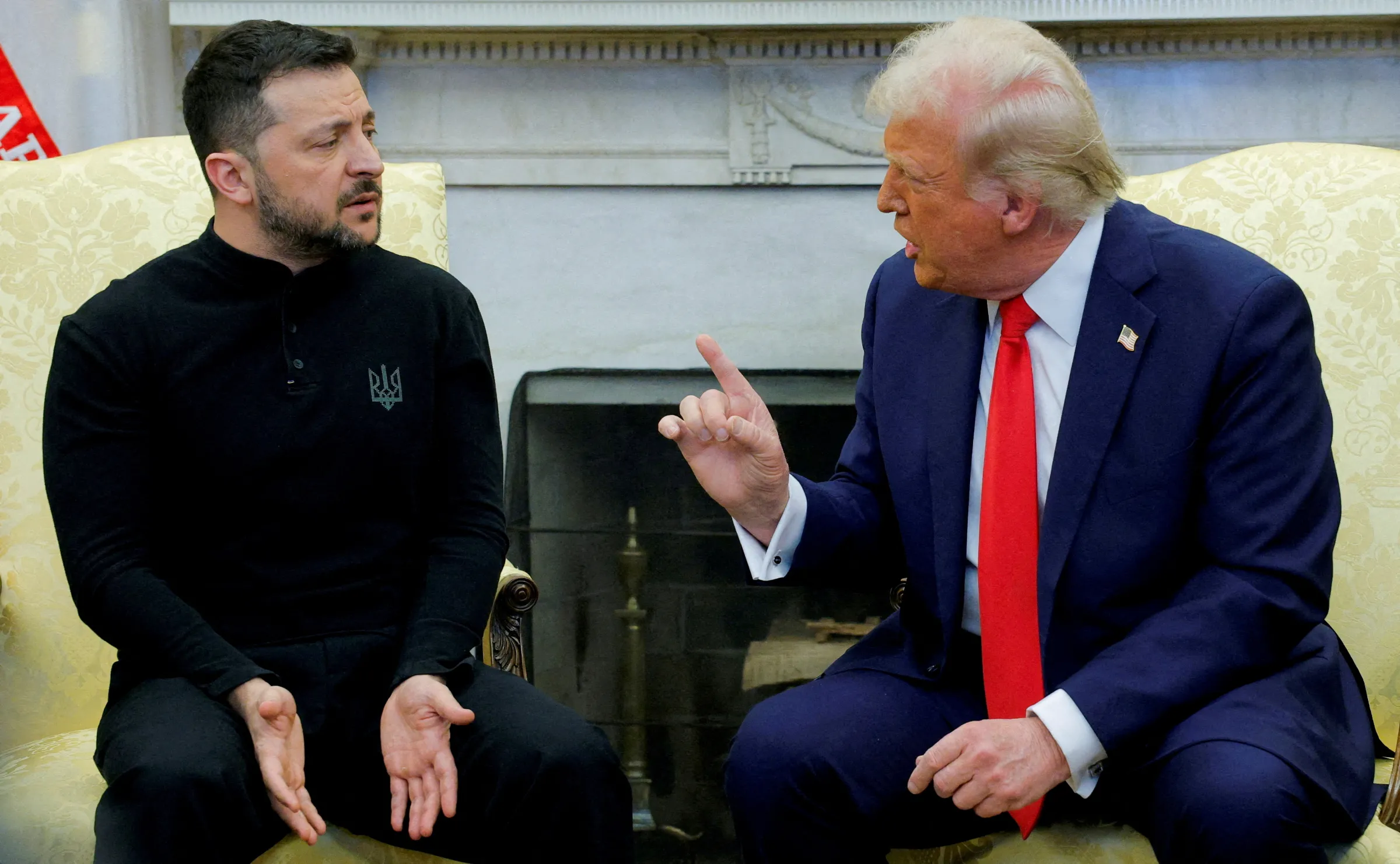Trump and Ukraine deal: Where are Europe's critical minerals?

U.S. President Donald Trump meets with Ukrainian President Volodymyr Zelenskiy at the White House in Washington, D.C., U.S., February 28, 2025. REUTERS/Brian Snyder
What’s the context?
What are the critical minerals U.S. President Donald Trump wants from Ukraine?
LONDON - The United States has signed a deal with Ukraine for preferential access to its critical minerals, with Presidents Donald Trump and Volodymyr Zelenskiy mending relations after months of tense negotiations.
With Trump working to secure a peace settlement in Russia's three-year war in Ukraine, the United States will also fund investment in Ukraine's reconstruction while providing no debt obligations under the agreement.
Ukraine is rich in critical minerals, including rare earth metals which are essential for clean energy technologies such as electric vehicle batteries, wind turbines and semiconductors.
Growing demand for these resources is fuelling global competition to secure supply. China dominates the global supply chain of critical minerals, processing 90% of all rare earth metals and 60% of the world's lithium.
Both the European Union and now the United States have highlighted Ukraine as a key partner for investment and securing a mineral supply.
What critical minerals does Ukraine have?
Ukraine has deposits of 22 of the 34 minerals identified by the EU as critical and has the continent's largest reserves of titanium, used in wind turbines, fuel cells and batteries, and uranium, used in nuclear power.
According to the Ukrainian Geological Survey, Ukraine also has enough reserves of lithium and graphite needed to produce batteries for 20 million electric vehicles.
Ukraine is also a top producer of gallium and neon and has reserves of rare earth metals such as neodymium, used in wind turbines and EV batteries, and erbium and yttrium, whose applications range from nuclear power to lasers.
Under the new deal, Ukrainian First Deputy Prime Minister Yulia Svyrydenko said her country will still "determine what and where to extract" and retain full ownership of its subsoil.
Where else in Europe has critical minerals?
The EU imports the majority of the critical raw materials it consumes and has said it will never be self-sufficient in its supply.
In a bid to strengthen the sector and reduce reliance on Chinese imports, the EU adopted the Critical Raw Minerals Act in 2024 with the aim of boosting domestic production.
Researchers have found Nordic countries have plentiful resources of critical minerals, including cobalt, graphite, rare earth metals, silicone and titanium.
Finland has significant nickel and cobalt deposits, meanwhile Norway is rich in graphite.
Portugal has some 60,000 metric tons of known lithium reserves and is the bloc's biggest producer.
The EU has only 0.5% of global reserves of rare earth elements, which it does not produce domestically, and is entirely dependent on Chinese imports.
Why is there a race for critical minerals?
Demand for critical minerals for use in clean energy technologies is expected to double by 2030, according to the International Energy Agency.
It said supply was not guaranteed as export controls from mineral-rich countries and the concentration of resources in few countries increase the risk of future shortfalls.
While China dominates supply chains, natural resources are concentrated in Africa, Latin America and South Asia.
More than a dozen mineral-rich African countries, including Democratic Republic of Congo (DRC), Nigeria and Namibia, have introduced export controls, fuelled by the desire to bring more of the supply chain to the continent.
Meanwhile China has restricted exports on gallium, geranium and antimony and increased export controls on graphite.
Who owns Europe's minerals?
The EU is aiming to source no more than 65% of a strategic raw material from a single third country and extract 10% from domestic reserves.
Currently, the EU's ownership and investment in global resources is higher than its domestic supply.
For example, the EU has 4.4% of the world's reserves of cobalt but produces nearly double that amount - 8.5% - of the refined product.
Only two minerals have majority domestic production, with France producing 76% of the bloc's needs for hafnium, used in nuclear reactors, and Spain producing 99% of strontium, used for magnets in electronics.
Portugal is expected to launch a tender this year for licenses to develop lithium, seeking to become a key supplier to the EU for green materials, while Australian company Infinity is developing a lithium mine and processing plant in Spain's mineral-rich south.
Swedish state-owned mining company LKAB has discovered Europe's largest rare earths deposit in the north of the country, although is yet to establish a mine.
This article was updated on Thursday May 1, 2025, at 15:45 GMT, to include the latest developments.
(Reporting by Beatrice Tridimas & Jack Graham; Editing by Jon Hemming, Ellen Wulfhorst, and Jack Graham.)
Context is powered by the Thomson Reuters Foundation Newsroom.
Our Standards: Thomson Reuters Trust Principles
Tags
- Clean power
- Adaptation
- Government aid
- Net-zero
- Energy access


















